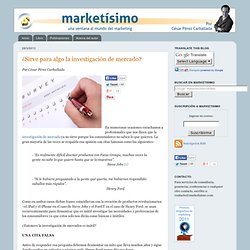

Personality Crisis! How Semiotics Can Heal Your Brand. Joshua Glenn For a successful brand, it is crucially important to evince a unique, coherent, and winning “personality”—a metaphor borrowed by brand strategists from the field of psychology.

Let’s play psychologist for a moment, then, and ask: What if your brand’s key assets or equities aren’t deeply and tightly integrated? Then your brand has a personality crisis… which is confusing and alienating to consumers. Luckily, semiotics offers a remedy. Since I got started in this business, in the late 1990s, it’s been my experience that the semiotician’s role is primarily that of a troubleshooter—an expert summoned into a crisis situation in order to play the role of healer and transformer.
Charla semioticastudio mar12-final. Clio Awards 2014: Ads from Chipotle, Volvo, Guinness, and more. Still courtesy of Volvo Trucks/YouTube At the 55th annual Clio Awards—held Wednesday evening in Manhattan—the ad industry and its invited guests let their masks drop.

It felt as though everyone had grown suddenly weary of upholding the ad game’s central façade. So they let it crumble. “I love advertising because I love lying,” announced Jerry Seinfeld, winner of an honorary Clio for his involvement in various ad campaigns. Seinfeld used his three minutes onstage to assure the assembled creatives that “duping people” is “an excellent use of your energies” and that “buying stupid things is a great way of life.” “OK, he said it,” chimed in emcee Whoopi Goldberg as she reclaimed the microphone. Given the multitude of Clio categories, there simply isn’t time to hail all the winners of gold, silver, and bronze. Laboratory of Virtual Reality and Economic Behavior LAVREB. Description: The main purpose of LAVREB is to investigate economic behavior through virtual reality technologies by using computer simulations and virtual environments.

Computer simulations are “desktop or low-immersive virtual environments” (LIVE) and use computer screen based applications of virtual reality taking many different forms, from renderings of 3-dimensional geometric shapes to interactive, computerized laboratory experiments. Virtual environments are generated by technologies that allow to explore and manipulate computer-generated multimedia environments in real time. These high-immersive virtual environments (HIVE) can be presented on multiple, room-size screens or through a stereoscopic, head-mounted display The Laboratory of Virtual Reality and Economic Behavior will organize and host Conferences, Workshops, Seminars and Research Meetings. Address: Laboratory of Virtual Reality and Economic Behavior, University of Siena, Italy Italy · lavreb.unisi.it Website: Social Links: Web 2.0 in Latin America: Why we blew it and what we can do to fix it. Editor’s note: This is a guest post by Juan Pablo Cappello, an investor in more than twenty early stage companies.

He will be discussing the issues raised in this article at The Next Web Conference Latin America later this month. Tickets are available now. Having invested in some 20 Latin American focused companies since the dawn of the Web 2.0 in the late 2000’s, I am fairly certain that I am about to lose over $1 million, and perhaps more. And the truth is I probably deserve to lose this money. I deserve to lose this money not because I am a bad guy, a reckless investor, an unhelpful mentor or inactive board member. The bet we made The bet we made was simple. This seemed like a reasonable strategy since in LatAm over the past 100 years most of the fortunes have been made and remade using a simple formula. We even “tropicalized” our expectations. And thus the Web 2.0 revolution in Latin America started. We are waking up three or four years later with one dozy of a hangover. ¿Sirve para algo la investigación de mercado? Por César Pérez Carballada En numerosas ocasiones escuchamos a profesionales que nos dicen que la investigación de mercado ya no sirve porque los consumidores no saben lo que quieren.

La gran mayoría de las veces se respalda esa opinión con citas famosas como las siguientes: - “Es realmente difícil diseñar productos con Focus Groups, muchas veces la gente no sabe lo que quiere hasta que se lo muestras”. Steve Jobs (1) - “Si le hubiera preguntado a la gente qué quería, me hubieran respondido: caballos más rápidos”. Henry Ford Como en ambos casos dichas frases coincidieron con la creación de productos revolucionarios –el iPad y el iPhone en el caso de Steve Jobs y el Ford T en el caso de Henry Ford- se usan recurrentemente para demostrar que es inútil investigar las necesidades y preferencias de los consumidores ya que estos solo nos dirán cosas básicas e inútiles.
¿Entonces la investigación de mercados es inútil? Cada vez que aparece esa cita, nunca se incluye la fuente. Publicidad del 'marketing sensorial' - Noticias de Salud, Educación, Turismo, Ciencia, Ecología y Vida de hoy. Sorpréndase.

Entre 1.600 y 3.000 anuncios pasan diariamente frente a usted, en la calle, en la radio, por televisión, en Internet... Pero haga memoria. Why I Hate Insights — IIeX Sao Paulo.